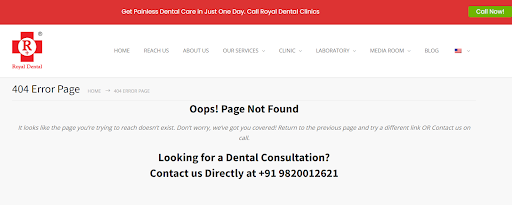Have you ever clicked on a link, only to find a blank page or a generic error message? This might be a sign of a “soft 404” error. Unlike traditional 404 errors that are easily detected with a clear “Page Not Found” message, soft 404s can go unnoticed, negatively impacting your website’s SEO and user experience.
An example of a soft 404 error might occur when a page has been deleted or moved, but the search engines haven’t updated their index yet. When a user clicks on a search result link that points to the old page, they might see a blank page, a generic error message, or even be redirected to a different page.
In this post, we’ll dive into what soft 404s are, how to identify them, and most importantly, how to fix them. By understanding and addressing soft 404 errors, you can improve your website’s search engine rankings and provide a better user experience.
What is a Soft 404 Error?
A soft 404 error, unlike a traditional 404 error, occurs when a web page is technically accessible but doesn’t provide any meaningful content or is difficult to find. This can be a frustrating experience for users and can negatively impact your website’s search engine ranking.
Common Causes of Soft 404 Errors
- Broken Internal Links: When internal links on your website point to pages that no longer exist, users can encounter soft 404 errors. These broken links can confuse search engines and make it difficult for users to navigate your site.
- Redirects: Multiple redirects can slow down page loading and confuse search engines, leading to soft 404 issues. If a user clicks on a link and is redirected multiple times before reaching the final destination, they may encounter a soft 404 error or simply abandon the page.
- JavaScript Errors: Errors in JavaScript code can prevent content from loading properly, resulting in a soft 404. If a page relies heavily on JavaScript and encounters errors, users may see a blank page or incomplete content.
- Thin Content: Pages with very little or no content can be seen as soft 404s, as they don’t provide any value to users. Search engines may also penalize pages with thin content, leading to lower rankings.
What is the Difference Between a "404 Not Found" and a Soft 404?
When a user attempts to access a webpage that doesn’t exist, they’re typically greeted with a “404 Not Found” error. This is a clear indication that the requested resource is unavailable. However, there’s another type of error that can be more insidious: the soft 404.

While a “404 Not Found” error is explicit, a soft 404 is more subtle. It occurs when a webpage technically exists, but the content is either blank, irrelevant, or doesn’t provide the expected information.
Why Are Soft 404 Errors Bad for SEO?
- Poor User Experience: When users encounter a soft 404, they are likely to be confused or frustrated. They may have difficulty finding the information they were looking for, leading to increased bounce rates and decreased time on site.
- Wasted Crawl Budget: Search engine crawlers spend valuable resources indexing soft 404 pages. This can divert their attention from more relevant and valuable content, potentially harming your website’s rankings.
- Link Equity Loss: If other websites link to a soft 404 page, their link equity can be wasted. Instead of passing authority to your website, it’s effectively lost in a digital void.
- Algorithm Penalties: Google and other search engines may penalize websites with excessive soft 404 errors. This can lead to lower search engine rankings and reduced visibility.
How to Identify Soft 404 Error?
While search engines can often detect soft 404s, you can also take proactive steps to identify them:
- Use a Website Crawler: Tools like Google Search Console, Ahrefs, or SEMrush can help you find broken links and pages with thin content. These tools provide detailed reports on your website’s performance, including any issues related to soft 404s.
- Manually Check Links: Regularly go through your website, clicking on internal links to ensure they lead to the correct pages. Pay attention to any pages that load slowly, display minimal content, or redirect you to unexpected destinations.
- Monitor User Behavior: Look for high bounce rates or low time on page, which could indicate issues with content or navigation. If users are quickly leaving your site after landing on certain pages, it might be a sign of a soft 404.
How to Fix Soft 404 Error?
Here are some strategies to identify and fix soft 404 errors on your website:
1. Fix Broken Links
- Redirect to the correct page: If the content has been moved, set up a 301 redirect to the new URL. This tells search engines that the page has permanently moved.
- Remove broken links: If the content is no longer relevant, delete the link or replace it with a more appropriate one.
2. Optimize Redirects
- Limit redirects: Avoid chaining multiple redirects, as this can slow down page loading.
- Use 301 redirects: These indicate a permanent move to the new URL and are preferred by search engines.
3. Address JavaScript Errors
- Debug code: Use browser developer tools to identify and fix JavaScript errors.
- Optimize code: Write efficient JavaScript to improve page load times and reduce the likelihood of errors.
4. Improve Content Quality
- Create high-quality content: Ensure your pages have valuable and informative content that meets the needs of your audience.
- Optimize for SEO: Use relevant keywords and meta descriptions to improve search engine visibility and help users find your content.
Conclusion
Soft 404 errors, while often invisible to users, can significantly impact your website’s SEO and user experience. These hidden errors can lead to lower search engine rankings, increased bounce rates, and a diminished overall website performance.
To ensure your website is operating at its best, it’s crucial to:
- Understand Soft 404s: Familiarize yourself with the characteristics of soft 404 errors, such as blank pages, generic error messages, or content that doesn’t match the expected URL.
- Identify Soft 404s: Utilize SEO tools and browser developer tools to detect these hidden errors on your website.
- Implement Fixes: Address soft 404s by redirecting broken links to the correct pages, creating relevant content, or removing unnecessary pages.
- Regularly Monitor: Continuously monitor your website for new soft 404s and take prompt action to prevent them from negatively affecting your site’s performance.
Remember, a healthy website is crucial for success in today’s competitive digital landscape. By addressing soft 404s and other technical SEO issues, you can ensure that your website is performing at its best and delivering value to your audience.
Need help with identifying and fixing soft 404s? Scale Delight, a leading SEO agency, can assist you in optimizing your website for maximum performance. Contact us today to learn more about our services.



